On this page I have some southern multi-banded powder horns. These types of horns are typically found in North Carolina and south. The single banded horns are covered on the Virginia Applied Tip Powder Horns page. All these horns have applied tips with most being screw-tips.
This medium sized horn (Horn #54) is a traditional right hand carry horn. It is approximately 14 3/8″ around the outside curve and 12 1/4″ tip to tip not including the Walnut stopper. The curly Maple base plug is approximately 2 3/4″ in diameter and is hollowed out better than half its length. The horn weighs a little over 8 oz due to the very dense base plug. The horn and base plug are stained with ferric nitrate and normally aged.

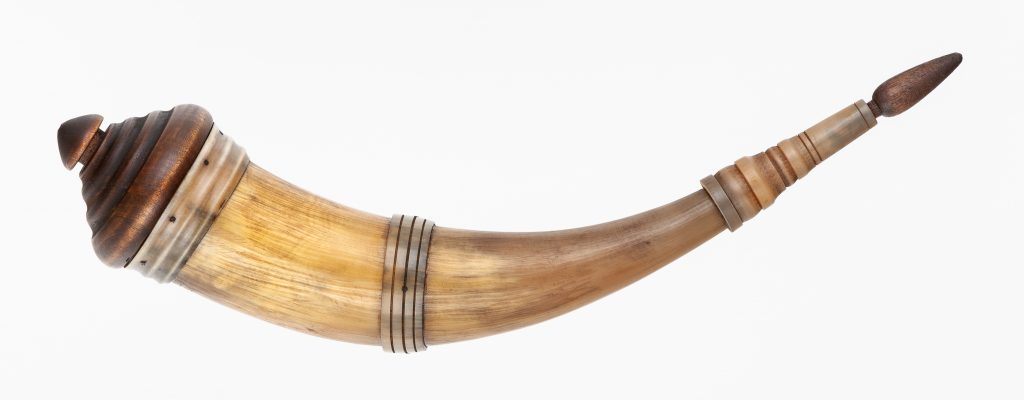
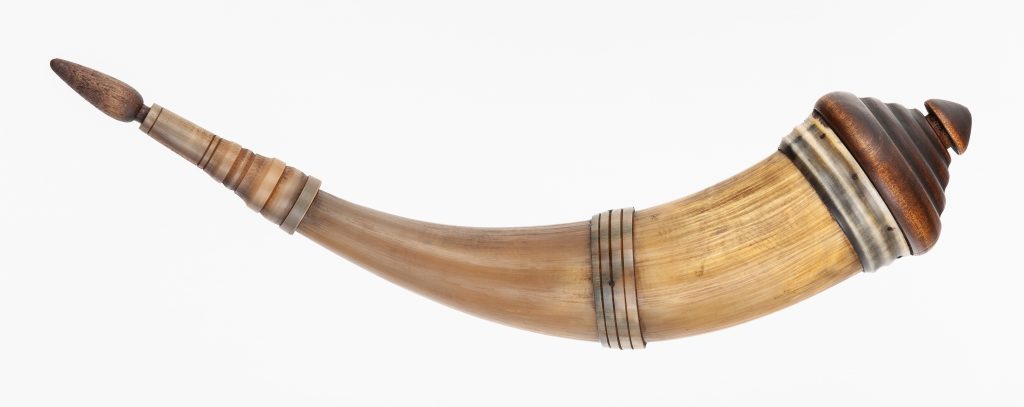
This medium to large sized horn (Horn #51) is a traditional left hand carry inspired by some Early Virginia horns shown in Jay Hopkin’s book Bone Tipped & Banded Horns. While it is a traditional left hand carry, it can be carried on the right. It is 16″ around the outside curve and 12 3/4″ tip to tip not including the stopper. The Black Walnut base plug is 2.72″ in diameter and hollowed out about 3/4 of its length. There is also a Black Walnut stopper in the horn screw-tip. There is no stain on the horn. It is all finished with Tried & True (linseed oil and beeswax). This horn is thin and translucent its entire length. It weighs a little under 8 oz.

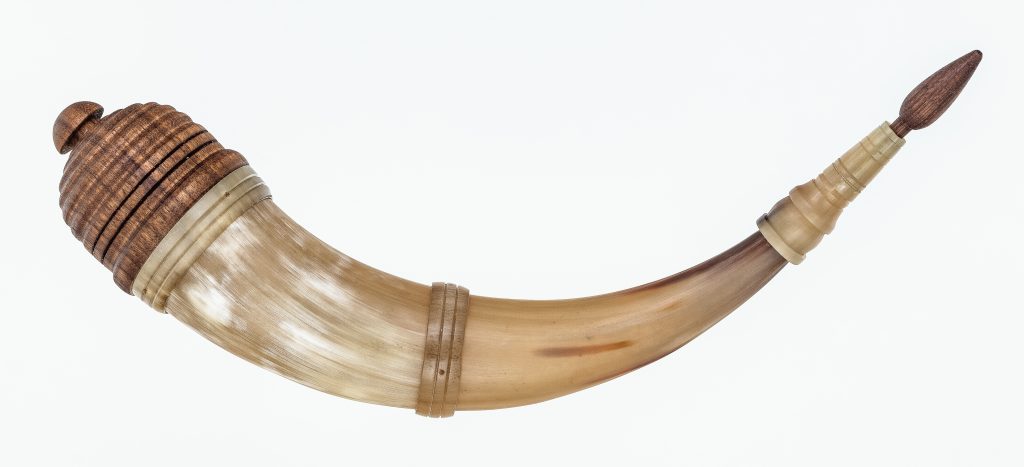
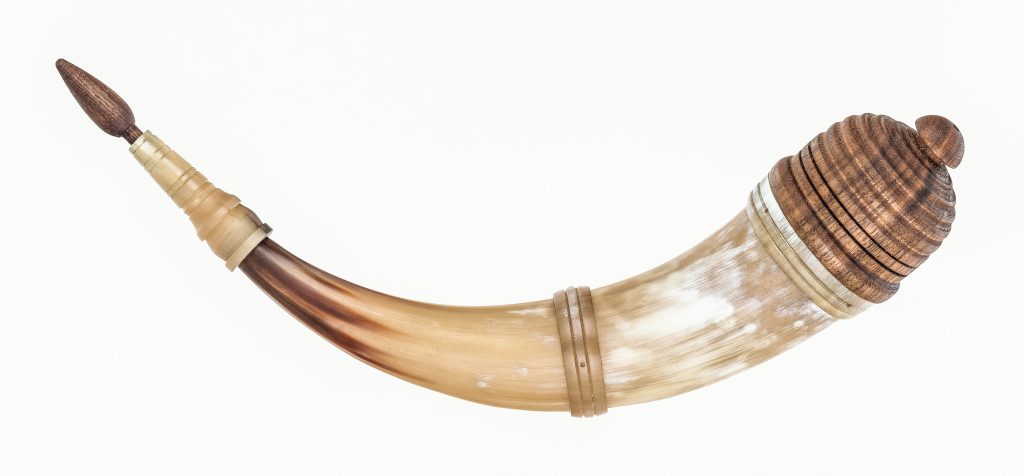
This medium sized horn (Horn #50) is a traditional right hand carry inspired by the horns found in North Carolina. It is about 14″ around the outside curve and about 11 1/4″ tip to tip. The walnut base plug is 2 1/4″ in diameter hollowed out about 3/4 of it’s length. The applied-tip is Axis deer antler. The stopper is walnut.

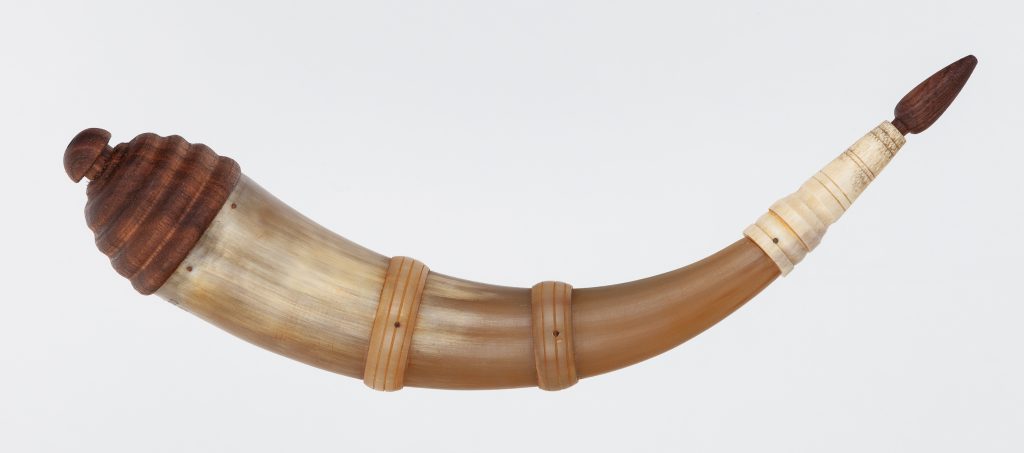
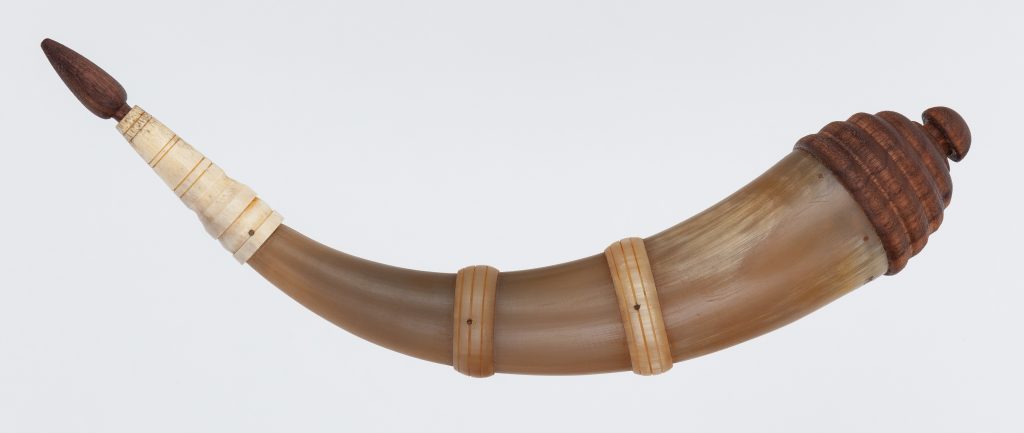
This little horn (Horn #47) is a traditional left hand horn, but can be carried either way. It is about 12″ around the outside curve and 10″ tip to tip. The walnut base plug is 2.03″ in diameter and hollowed out about 3/4 of it’s length. The applied-tip is Axis deer antler. The stopper is walnut.

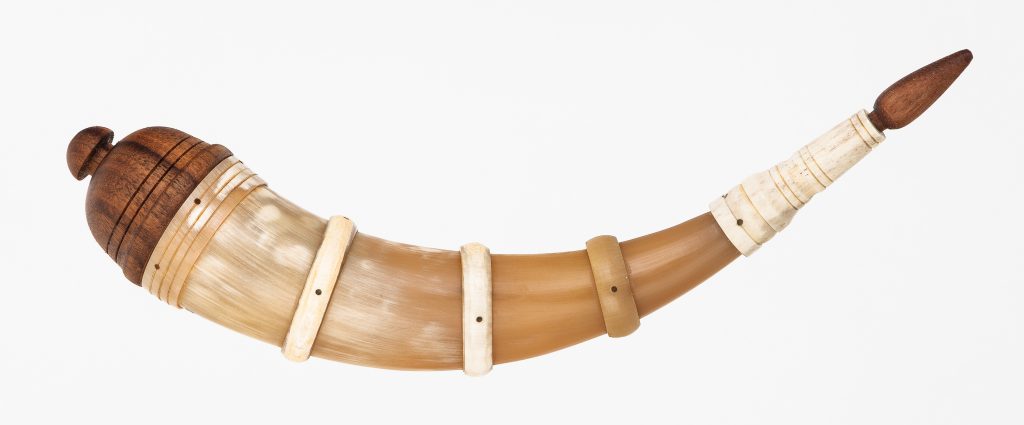
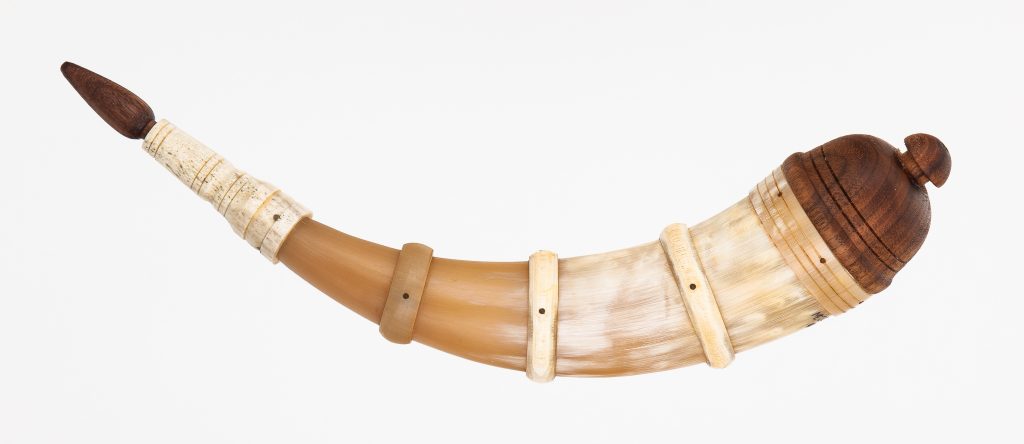
The next horn (Horn #65) is a historically left hand horn carried on the right side so that it wraps around the body. It is about 14 5/8″ finial to tip, not including the stopper, around the outside curve. Tip to tip it is 13″. The base plug is about 2 5/8″ in diameter. The base plug is hollowed out about 3/4 of its length. The Axis deer antler tip and horn collar are pegged on. The base plug and stopper are both Black Walnut.

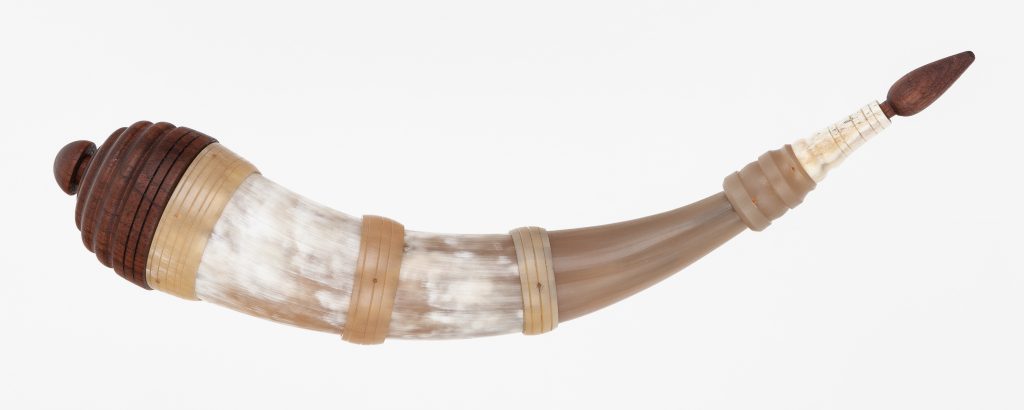

The horn (#27) below is a particularly small one. It is pretty straight and could easily be, historically, either a right or a left hand carry; about 11″ around the outside curve staple to stopper. The base plug is a little less than 2 1/4″ in diameter. It has a screw-tip with a female thread. The base plug is hollowed out about 3/4 of its length.
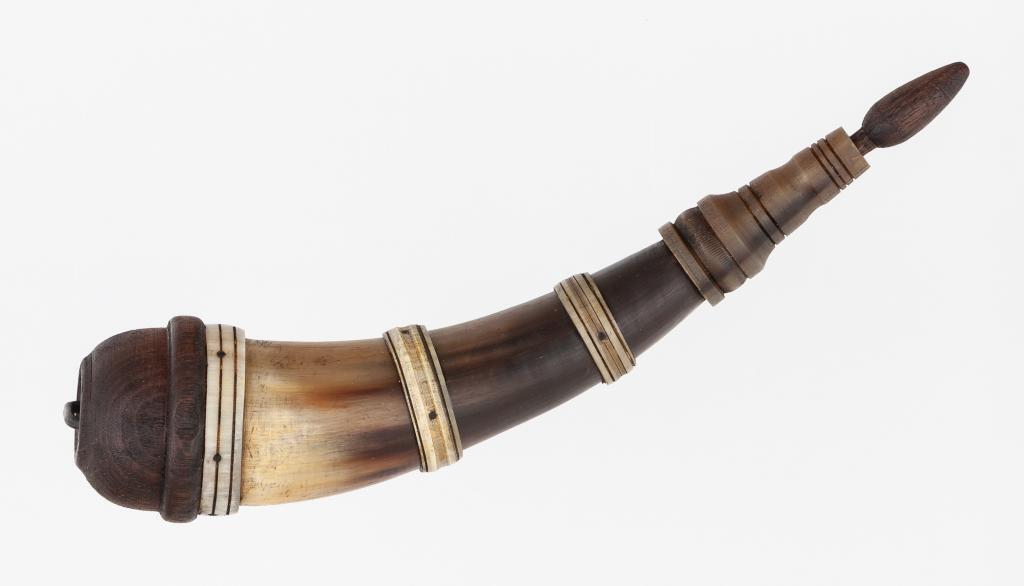
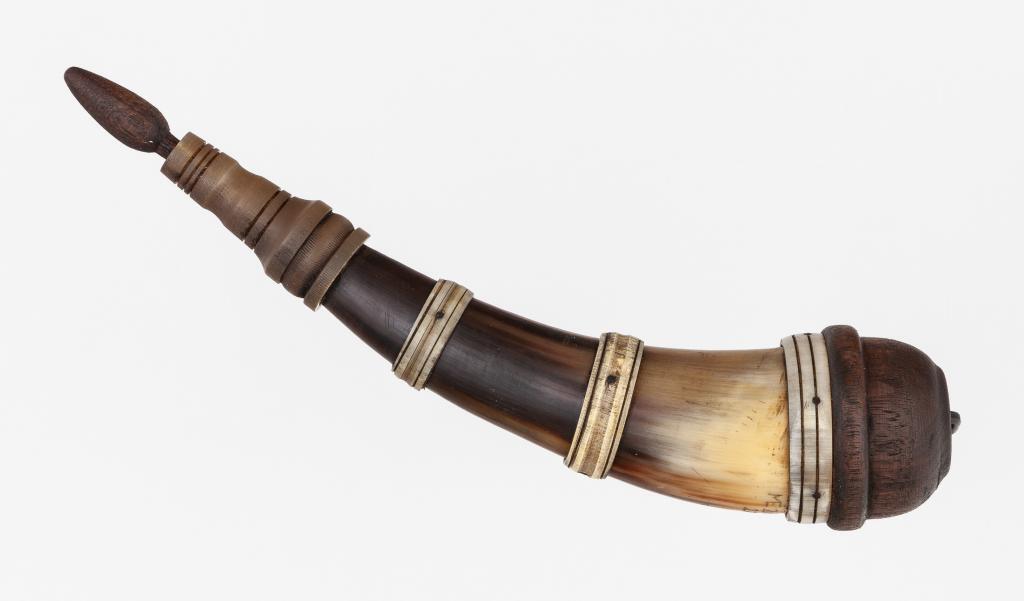
The following horn (Horn #31) is historically a left hand carry, but is setup as a right hand carry. It can be carried either side without a problem. It is about 13 1/2″ staple to stopper around the outside curve. The base plug is a little less than 2 1/4″ in diameter. It has a screw-tip with a female thread. The base plug is hollowed out about 3/4 of its length.

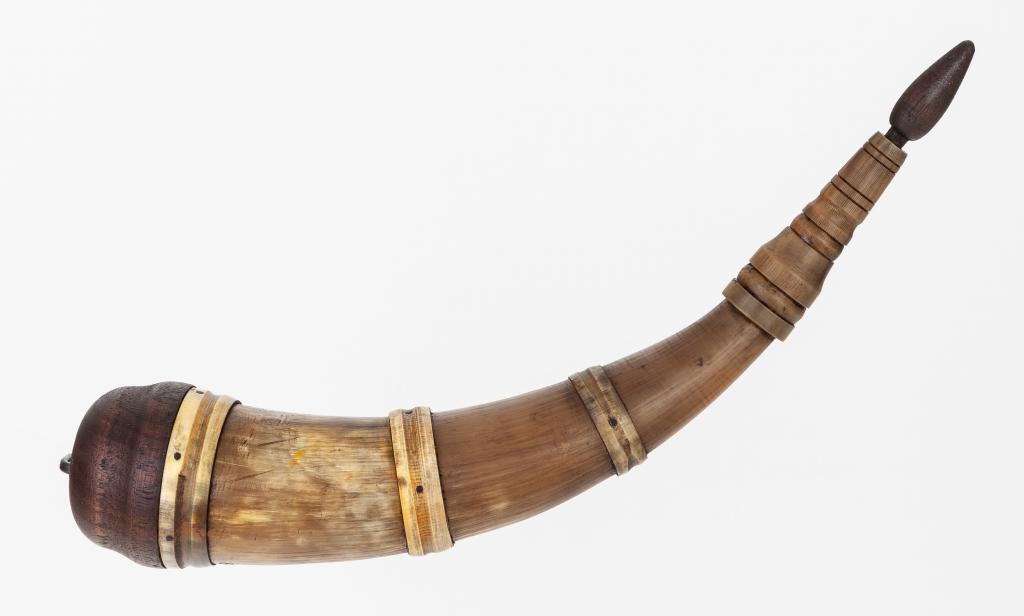
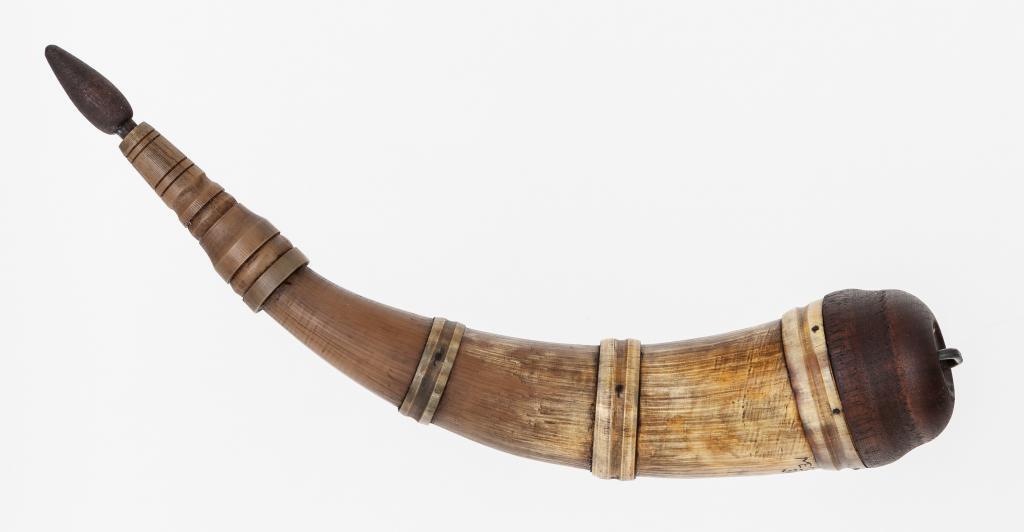
The following horn (Horn #32) is historically a left hand carry, but is marked assuming a right hand carry. It can be carried on either side. It is about 15″ button to stopper around the outside curve. The base plug is a little more than 2 3/8″ in diameter. It has a screw-tip with a female thread. The base plug is hollowed out about 1/2 of its length. There is a slight gap between the base ring and the base plug, but the horn is air tight. This horn is also a little on the heavy side at 7.4 oz. All that being said, this is still a very nice looking little horn.

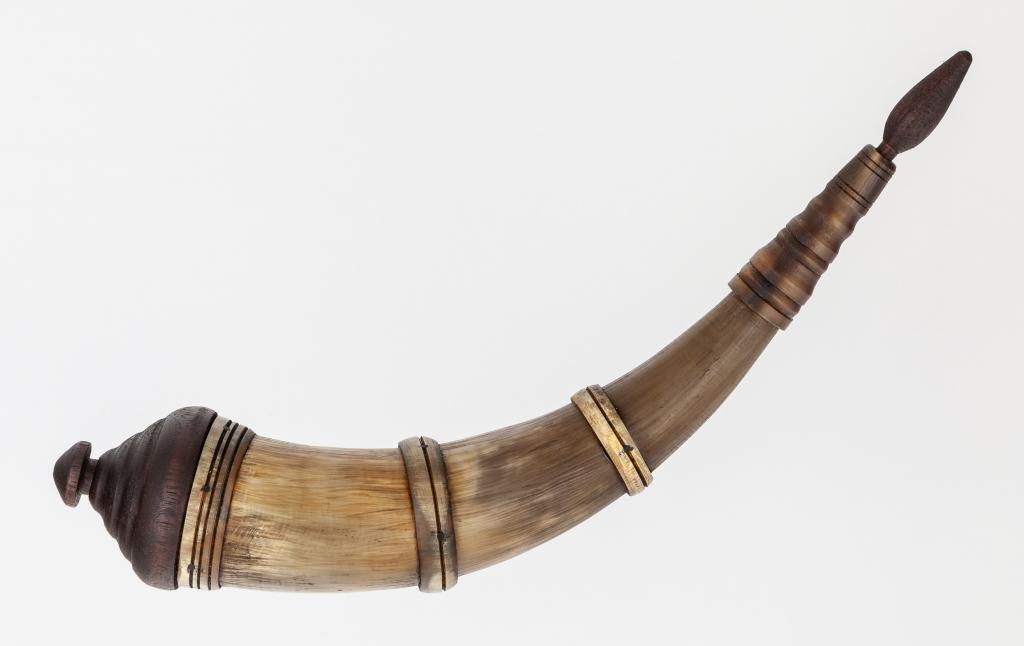
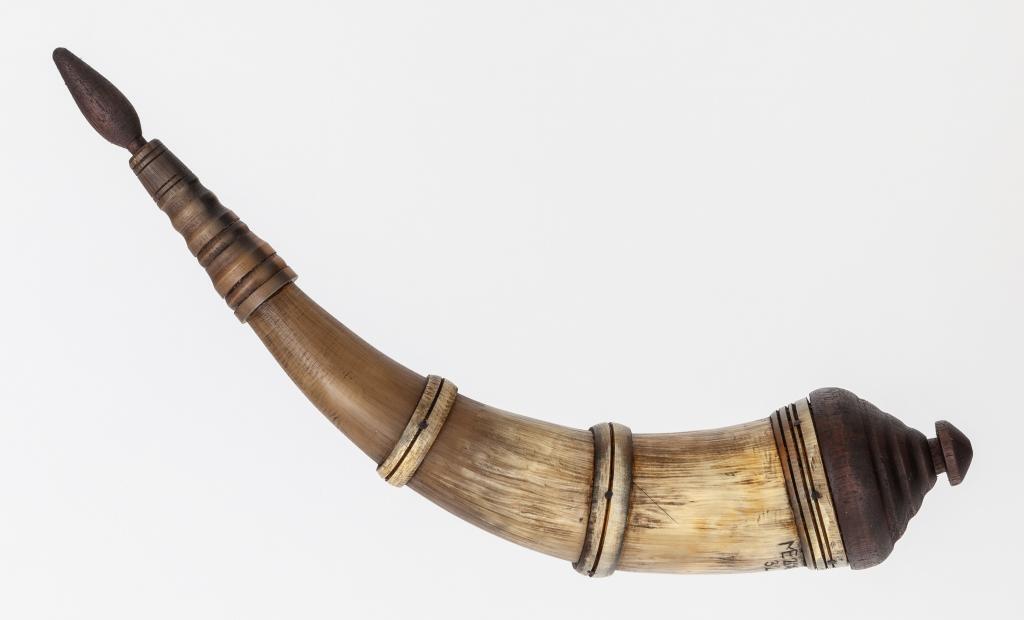
The following horn (Horn #33) is a big one inspired by some early Virginia horns in Jay Hopkin’s book. I think it would work well with my early Virginia shot pouch. It is historically a right hand carry, but I think it would work better as a left hand carry. It can be carried on either side. It is about 17″ button to stopper around the outside curve. The base plug is a little more than 2 5/8″ in diameter. It has an applied tip made up from horn and antler. The base plug is hollowed out about 3/4 of its length. This horn is actually very light weight for its size. It weighs 6.8 oz.

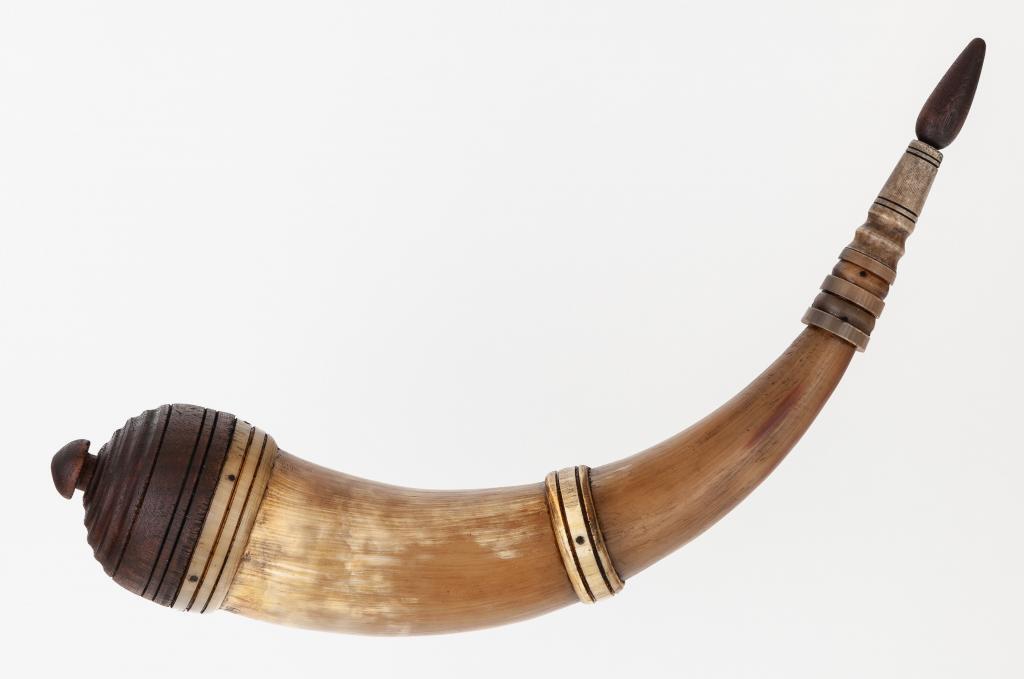
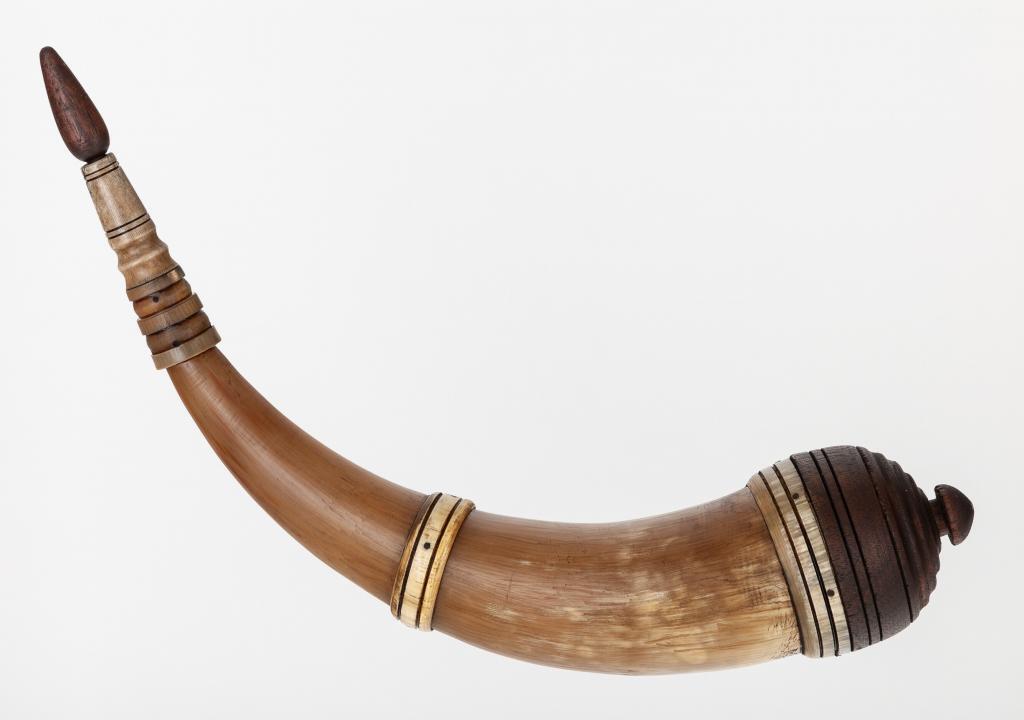
Right or Left Hand Carry?
What is right or left hand carry? Simply, it is the side of the body on which a horn is intended to be worn. Historically, a curve of the tip to the left as viewed from the top is a right hand carry horn and also from the right side of the cow. A curve of the tip to the right would historically be a left hand carry horn and from the left side of the cow. If there is no significant curve of the horn as viewed from the top, then the horn can be easily worn on either side with no conflict. Most horns have so little curve it really doesn’t matter much and the modern pattern of carry is frequently opposite of the historical pattern.
Carrying a horn on the same side of the body as it came from the cow results in the tip pointing toward the body and the base pointing away from the body. I also like the base of the horn to point to ward the body, as do many modern wearers, so I usually use the opposite side horn and rotate it about 90 degrees so that both the tip and the base of the horn point into the body. This makes a horn from the left side of the cow into a powder horn you can carry on the right side of the body. This is my personal preference, but not generally historically correct. Historically, powder horns were usually carried on the same side of the body as they came from on the cow. If you want to be completely historically correct, you need to understand that.
Sometimes a horn that is technically a left hand horn might wrap around the body better on the right hand side and vice versa. So, in describing a horn, I will tell you whether a horn is historically a left hand or a right hand. Then I will tell you on which side the horn was built to be carried, if it is different. I will also try to include a photo from the top of the horn so you can see the curve for yourself. On which side you actually carry a horn, that is up to you.
